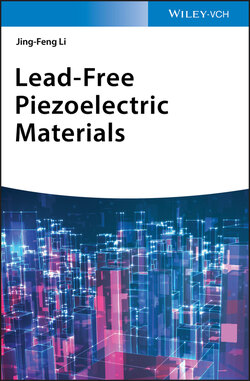Читать книгу Lead-Free Piezoelectric Materials - Jing-Feng Li - Страница 12
Оглавление
Preface
Ferroelectric/piezoelectric materials have been a hot research topic for a diversity of fields not only due to their wide applications but also because of their fascinating physical and chemical nature. The market has been dominated by lead zirconate titanate (PZT) ceramics over decades, due to their excellent properties and flexibility in terms of compositional modifications. Since 2006, the European Union has already adopted some well‐known directives, e.g. the Waste Electrical and Electronic Equipment (WEEE) directive and the Restriction of the use of certain Hazardous Substances (RoHS) in electrical and electronic equipment directive, to protect human health and the environment by prohibiting the uses of hazardous substances in electrical and electronic devices. Therefore, lead‐free piezoelectrics have been attracting more and more interest since the beginning of the twenty‐first century. Encouraging progress in the development of high‐performance lead‐free piezoelectrics has been witnessed over the last decade. Despite a very limited scale, lead‐free piezoelectric ceramics have successfully entered the market, which is estimated to be US$ 172 million in 2019. Given the significant R&D progress of lead‐free piezoelectrics, a renewal of the RoHS directive to terminate the exemption of lead‐containing piezoelectric materials should be approaching soon, at least for some applications that do not require a comprehensively excellent performance of high piezoelectricity and good temperature stability, equivalent to those of the PZT‐based materials.
I believe that now is the perfect time for reviewing the research of the lead‐free piezoelectrics, which is not only important for the young generation of researchers who are looking for a good starting point but also valuable for those who are already in the fields to think and innovate new strategies for enhancing the piezoelectric performances. Certainly, there have been many excellent review articles but most of them rather focused on some specific topics in individual material systems. There are four promising lead‐free piezoelectric systems, which are BaTiO3, (K,Na)NbO3, (Bi0.5,Na0.5)TiO3, and BiFeO3. These systems share similarities but they are not cut from the same cloth. To have a comprehensive picture of the world of the lead‐free piezoelectrics, we need a book that covers the fundamental knowledge about piezoelectrics and also the cutting‐edge research progress about lead‐free piezoelectrics. With such motivation, I wrote this book.
This book consists of seven chapters, starting with two introductory ones about the fundamentals of piezoelectricity and lead‐free piezoelectrics. These two chapters should be beneficial for the readers, especially for those who wish to reinforce their basic knowledge. The first chapter will provide the fundamental background for piezoelectricity, emphasizing on the piezoelectric effects, the relationship between ferroelectrics and piezoelectrics, the meanings of the piezoelectric parameters, and common characterization techniques. In the second chapter, an overview of the lead‐free piezoelectrics will be given, including the background, the general classification, and the research progress of the lead‐free piezoelectrics. Next, four representative lead‐free piezoelectric systems will be introduced in the following chapters. Each chapter consists of a brief introduction of the history and crystal structure as well as the characteristics of the focused lead‐free piezoelectric system. Finally, this book will overview some applications based on the lead‐free piezoelectrics. By comprehensively covering the aforementioned contents, I expect this book to be informative to the readers. Other lead‐free piezoelectric materials such as AlN and ZnO are not involved in this book, since they are non‐perovskite‐structured and largely differ from the focused material systems in properties and applications.
I would like to thank my group members for their contributions to this book. Special thanks go to Dr. Yichi Zhang (postdoc), Dr. Zhen Zhou (graduated Ph.D. student), Dr. Lei Zhao (postdoc), Dr. Lisha Liu (postdoc), and Dr. Ke Wang (associate professor) for their valuable devotion to the writing of Chapters 3–7, respectively. Also, I deeply thank Mr. Hao‐Cheng Thong (Ph.D. student), Dr. Qian Li (assistant professor), Mr. Yi‐Xuan Liu (Ph.D. student), Dr. Qing Liu (graduated Ph.D. student), Dr. Fang‐Zhou Yao (graduated Ph.D. student), and Mr. Hua‐Lu Zhuang (Ph.D. student) for their great helps in editing the manuscripts.
Finally, I also want to express my thanks to my family and colleagues for their continuous encouragement and extensive support. I sincerely wish my book will be helpful to the readers who are interested in ferroelectrics and piezoelectrics.
Jing‐Feng Li
30 April 2020
Beijing, China
